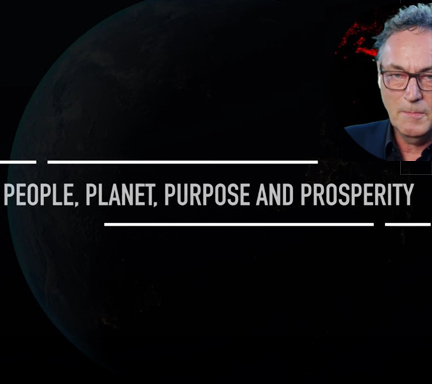Is the way of leading in your organization in alignment with your business model?
I keep my eye on the future of work, and especially on the future of leadership. I’ve also been interviewing thought leaders from diverse viewpoints about talent adaptability, including leader adaptability. One of these thought leaders is futurist Gerd Leonhard. In a recent video, he expresses a view about business models that, to me, includes a call to action for all leaders:
“[It used to be that]…you could do good things [as a business] and not be remunerated for it. So, until now, that was a big problem. And now we are shifting over into this new paradigm ‘that’s the business model! …[this model is] not just about climate change, it’s about the general outlook on life, and how to we organize things to be human – fit for the future.”
What’s a business model?
Your business model is a set of assumptions, hypotheses, and choices about how your business will generate revenue and create value. The aim is to create a virtuous cycle of profitable growth and competitive advantage.
Your business model is like a story of how you will do business. It’s how your business will work (while strategy is more about the actions to be taken to win against competitors).
Channel distribution or employed agents, , monthly subscription or one-time sale, service contracts, custom or process manufacturing, revenue from ads, building community, etc., are examples of business model choices. So, why are “People, Planet, Purpose, and Prosperity” needing to be addressed as business model choices?
What Gerd is saying is that we still need profit (Prosperity) choices for our business model, but that missing people, planet, or purpose will reduce the outcomes we are looking for: revenue, value created, virtuous cycle of profitable growth, and/or competitive advantage.
Leaders set the stage for change
For most of us, this is a change from how we thought just five years ago; maybe one year ago; maybe yesterday!
When did you last re-consider your business model? Is doing so even part of your strategic planning? Has your strategic planning become an exercise that repeats what was done last time? Does the exercise block innovation?
Leaders set the stage for change. Whether you lead strategic planning, or you work with a consultant—step up, prepare, and ask expansive questions. Here’s a good one: Please tell me more.
Align the way of leading with your business model
Align the way of leading with your business model. Not just your way of leading; I mean how all who influence others, lead. Think about this. That’s a lot of people. The short message in this is that, when your business model choices change, then you need to communicate this in a way that is meaningful to others, and in a way that they can carry that message on through the organization.
Have a strong grasp of why the change was made. Is it to address “People” in a different way? Is it more closely aligned with a shared “Purpose?” Will it help protect the “Planet?” Will it lead to “Prosperity” for more people and longer term as compared to a prior focus on short-term profit? The more you consider how these words fit, the clearer your understanding—and your communication—will be.

Your best next step
For your “Your 1 Best Next Step,” ask yourself: How have we incorporated People, Planet, Purpose, and Prosperity into our business model?

